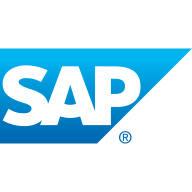

SAP Replication Server and Spring Cloud Data Flow compete in data integration and management. Spring Cloud Data Flow holds the advantage due to its flexible features and scalability, despite higher costs.
Features: SAP Replication Server supports efficient data replication with real-time synchronization, essential for transactional consistency and disaster recovery. It provides robust cross-database replication under heavy load, offering flexibility. Furthermore, it is beginner-friendly with extensive online resources. Spring Cloud Data Flow features robust data streaming and batch processing capabilities, supports microservices architecture, and is cloud-native, providing flexibility and scalability. It enables simple programming models and integration with other systems, allowing comprehensive data workflows.
Room for Improvement: SAP Replication Server could enhance ease of deployment in cloud environments and reduce reliance on traditional infrastructure. It may also need more seamless integration with modern tools. Additional automation and AI features could improve its utility further. Spring Cloud Data Flow could benefit from enhanced debugging tools to troubleshoot complex workflows. Offering more tailored support for smaller businesses may lower entry barriers. Improving the interface for non-technical users could also broaden its accessibility.
Ease of Deployment and Customer Service: Spring Cloud Data Flow's deployment is optimized for cloud platforms, enhancing agility and ease of integration. Its developer-friendly interface and microservices-based model support agile environments. SAP Replication Server demands more traditional infrastructure settings, with support and documentation aiding deployment challenges. However, cloud-native features in Spring Cloud Data Flow make integration smoother for cloud-oriented projects.
Pricing and ROI: SAP Replication Server has higher initial setup costs due to traditional infrastructure needs but offers a strong ROI through robust transaction processing. Spring Cloud Data Flow, with perceived higher upfront investment, provides a favorable ROI through scalable cloud-based solutions, aligning with modern enterprise requirements. Its adaptability and scalability suggest better long-term value.


Information and data-driven insight is what powers business today. But to get the most from your enterprise data, you need a way to bring transactional, streaming, social media, and other data together – regardless of its format and whether it’s structured or unstructured – and be able to analyze it. The challenge is moving, replicating, and centralizing a wide variety of data efficiently, cost-effectively, and quickly enough to meet business demands for active insight. SAP® Replication Server® can help. SAP Replication Server enables the continuous movement of mission-critical application data.
Spring Cloud Data Flow is a toolkit for building data integration and real-time data processing pipelines.
Pipelines consist of Spring Boot apps, built using the Spring Cloud Stream or Spring Cloud Task microservice frameworks. This makes Spring Cloud Data Flow suitable for a range of data processing use cases, from import/export to event streaming and predictive analytics. Use Spring Cloud Data Flow to connect your Enterprise to the Internet of Anything—mobile devices, sensors, wearables, automobiles, and more.
We monitor all Data Integration reviews to prevent fraudulent reviews and keep review quality high. We do not post reviews by company employees or direct competitors. We validate each review for authenticity via cross-reference with LinkedIn, and personal follow-up with the reviewer when necessary.